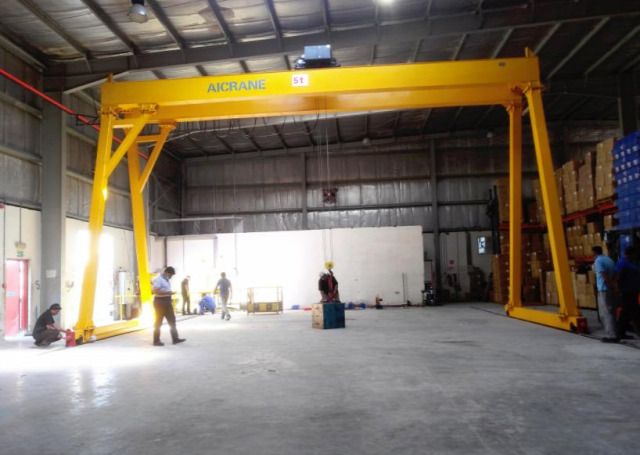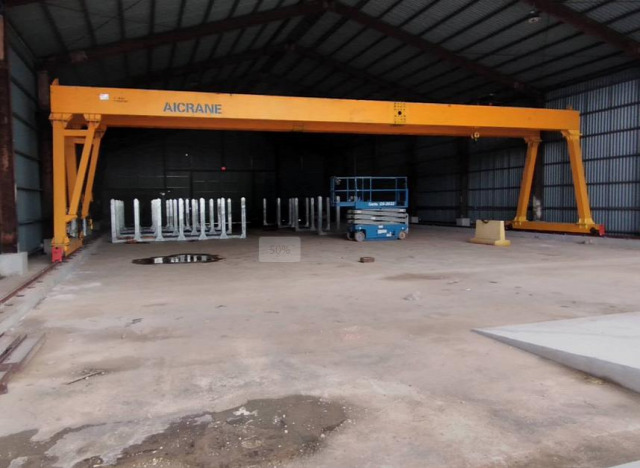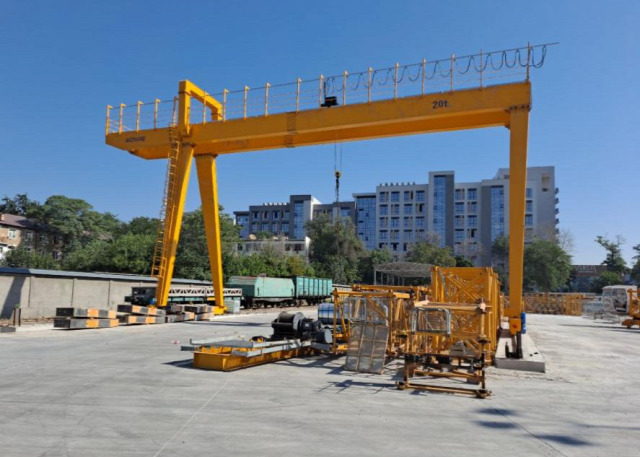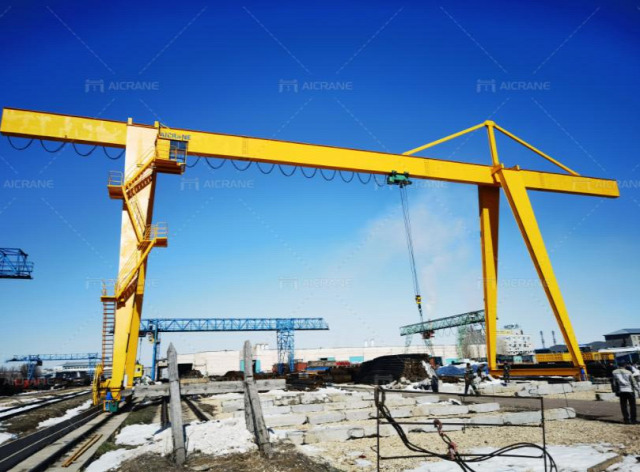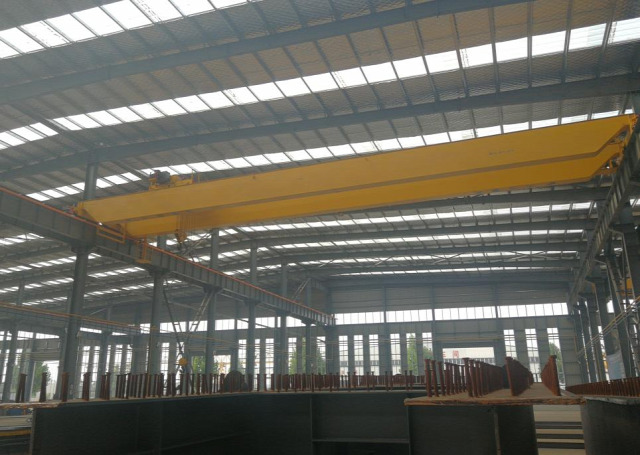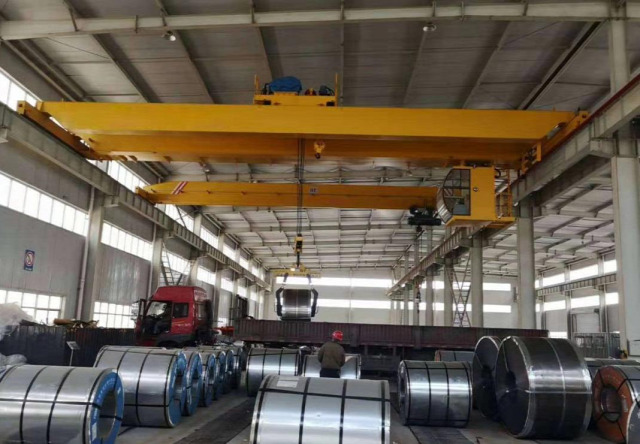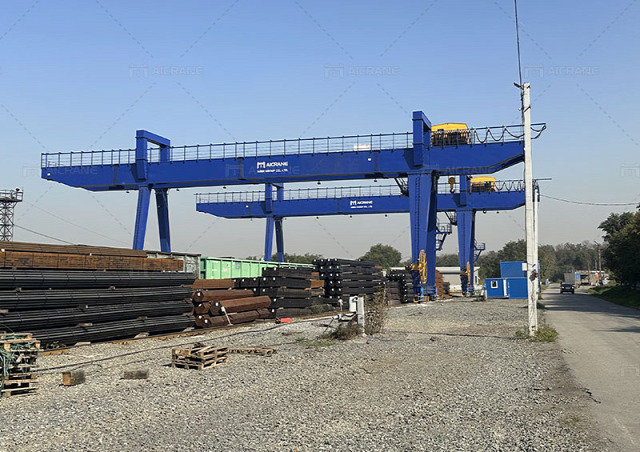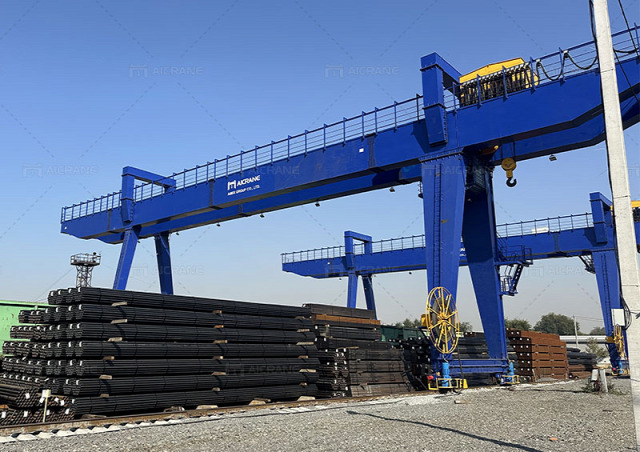When considering the acquisition of a double girder overhead crane for your business, it’s essential to weigh not just the initial purchase price but also the long-term operational costs associated with its use. Overhead cranes are heavy-duty industrial machines, typically employed in facilities where lifting and moving heavy loads are frequent, such as in steel mills, warehouses, and manufacturing plants. While the upfront cost is often a primary concern, the operational costs over the crane’s lifespan can significantly affect the total cost of ownership. This article will explore both the initial price and long-term operational costs to provide a comprehensive view of the financial investment involved.
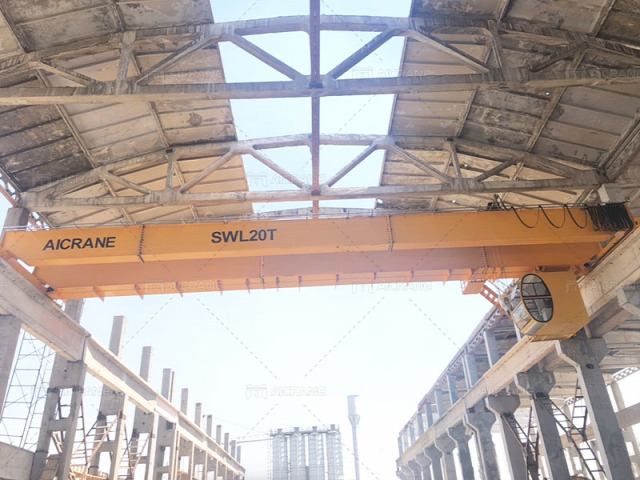
Understanding Double Girder Overhead Cranes
What is a Double Girder Overhead Crane?
A double girder overhead crane is a type of crane where the bridge structure is supported by two parallel girders, providing greater lifting capacity, stability, and span compared to a single girder crane. These cranes are often used in industries requiring heavy lifting capacities, with the ability to lift loads ranging from 5 tons to 500 tons or more.
Double girder cranes are generally more expensive than single girder cranes due to their enhanced capabilities, including higher lifting capacity, increased span, and improved safety features. They are also more versatile, as they can be equipped with various hoist systems to meet specific operational needs.
Price Considerations for Double Girder Overhead Cranes
The double girder overhead crane price depends on several factors, including:
- Lifting Capacity: Cranes with higher lifting capacities typically cost more. A crane designed to lift heavier loads requires more robust materials, advanced engineering, and larger motors.
- Span and Height: The span (distance between the rails) and the lifting height (maximum distance the crane can lift a load) also influence the price. Larger spans and higher lifting heights generally mean a higher price tag due to the increased material and design requirements.
- Control System: The type of control system (manual, radio remote, or automated) can also affect the price. More advanced control systems with features such as automatic load sensing or remote operation tend to be pricier.
- Custom Features: If your crane requires customized features, such as specialized hooks, custom lifting devices, or specific environmental adjustments (e.g., explosion-proof or corrosion-resistant components), the price will increase.
- Brand and Manufacturer: The manufacturer’s reputation and the quality of their cranes also play a role in the price. Well-established brands with a history of reliable cranes will often charge more for their products.
Initial Price Range
A general price range for a double girder overhead crane typically starts at around $20,000 for basic models with low lifting capacities and simple features. For more advanced models, particularly those with capacities of 50 tons or more, the price can easily reach $100,000 to $200,000 or higher, depending on the specifications and customizations involved.
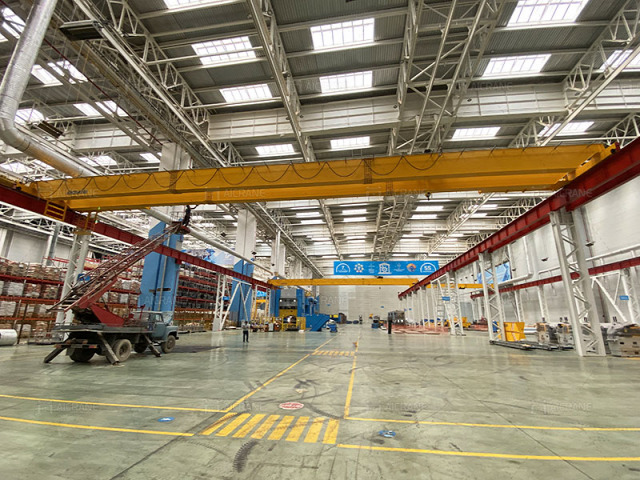
Long-Term Operational Costs: What to Expect
While the initial price of overhead crane is important, the long-term operational costs will have a more significant impact on your budget over time. These costs encompass the maintenance, energy consumption, and potential repairs or replacements throughout the life of the crane.
1. Energy Costs
Energy consumption is one of the major ongoing costs for double girder overhead cranes. These machines are powered by electricity or hydraulics, and the amount of energy consumed can vary based on the frequency and duration of crane operations. Cranes that operate for extended periods or handle heavier loads consume more power.
Electric Cranes vs. Hydraulic Cranes
- Electric cranes are typically more energy-efficient than hydraulic cranes. Electric-powered cranes tend to have lower operating costs, but the cost of electricity can vary depending on the location and local utility rates.
- Hydraulic cranes, while useful for heavy-duty operations, generally consume more energy because of the hydraulic systems, which can result in higher long-term energy costs.
To reduce energy costs, some cranes are designed with energy-saving features, such as regenerative braking systems, which capture and store energy during the lowering of heavy loads and reuse it during lifting.
2. Maintenance and Repair Costs
Over time, all cranes will require maintenance to keep them in optimal working condition. Maintenance costs vary depending on several factors, including the crane’s usage, operating environment, and design complexity. Regular maintenance is essential to prevent unplanned downtime and avoid costly repairs.
Routine Maintenance
Routine maintenance tasks for double girder overhead cranes typically include:
- Lubrication of the hoist system and wheels
- Checking and adjusting the alignment of the tracks
- Inspecting and maintaining the electrical systems
- Cleaning and replacing worn-out components (e.g., brake pads)
For cranes operating in harsh environments (such as steel mills or chemical plants), maintenance may be more frequent, and replacement parts might be more expensive.
Repairs and Spare Parts
As the crane ages, it may require repairs due to wear and tear. Common repair costs may involve replacing worn-out parts such as cables, brakes, hoists, and motors. Availability and pricing of spare parts from the manufacturer or third-party suppliers can affect the cost of repairs.
The operational cost can be reduced by choosing a crane brand with readily available parts and a strong network of service providers for quick repairs.
3. Downtime Costs
Unplanned downtime, due to equipment failure or maintenance issues, can be costly for any business that relies on crane operations for day-to-day tasks. For businesses in critical industries such as manufacturing or shipping, even a few hours of downtime can result in significant productivity losses.
Minimizing downtime is a priority for crane owners. This is why investing in a reliable crane with high-quality components and regular maintenance schedules can save money in the long run.
4. Operator Training and Labor Costs
Operating a double girder overhead crane requires skilled operators who are trained to handle the machine safely and efficiently. The cost of training operators is an important consideration for many businesses. Ensuring your crane operators are properly trained can prevent accidents, extend the life of the crane, and improve overall productivity.
In addition to training, the number of operators required and their wages should be factored into the total operational cost. Some modern cranes may offer more automated systems that reduce the need for human labor, thus lowering labor costs.
Conclusion: Finding the Right Balance
While the price of a double girder overhead crane is an important factor to consider, it is essential to evaluate the long-term operational costs as well. By considering factors such as energy consumption, maintenance and repair costs, downtime, and labor requirements, businesses can make a more informed decision about the total cost of ownership.
Balancing Upfront Costs with Long-Term Savings
Ultimately, the best crane for your needs is one that provides a balance of a reasonable initial price and low long-term operational costs. Opting for a higher-quality crane with better energy efficiency, lower maintenance needs, and longer-lasting components may result in a higher upfront cost, but it will save you money in the long run by reducing operational expenses and downtime.
When considering the purchase of a double girder overhead crane, be sure to factor in both the initial investment and the long-term operational costs to determine the total cost of ownership. Working with a reputable manufacturer, conducting regular maintenance, and ensuring efficient crane operation can help keep costs manageable and maximize the return on your investment.


